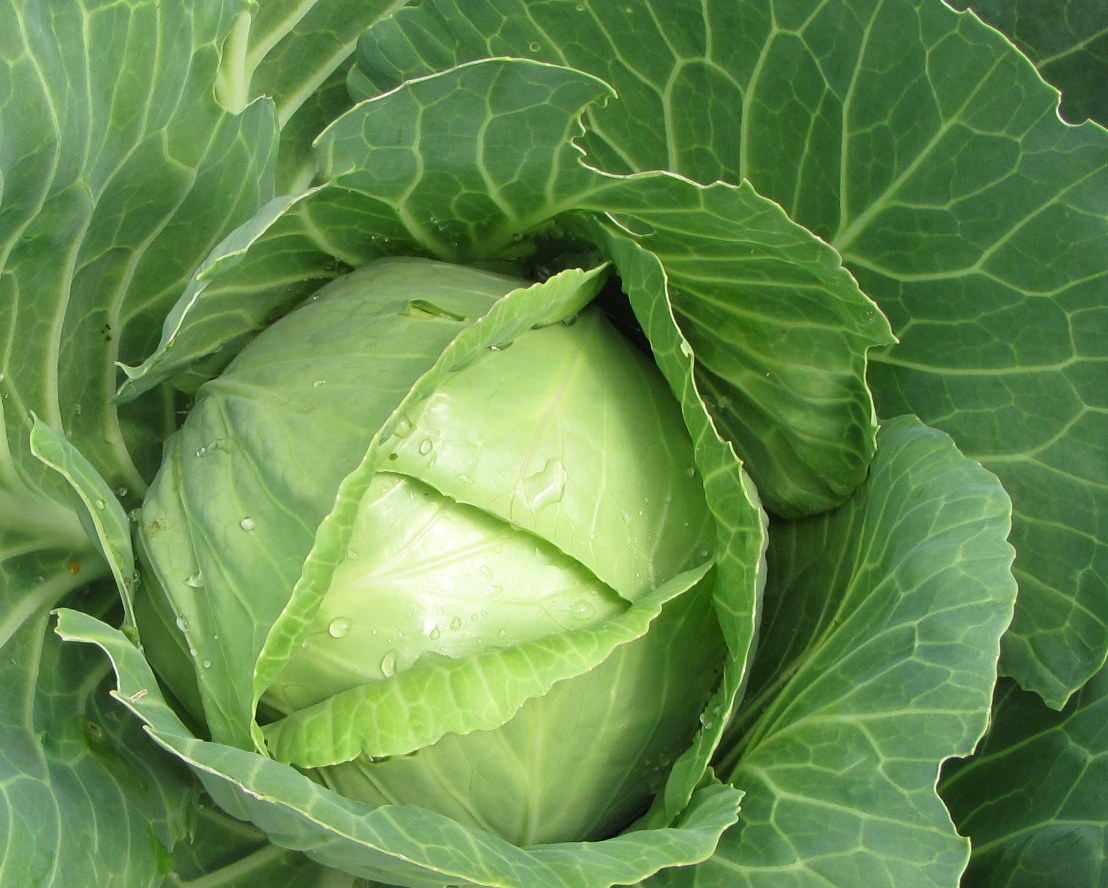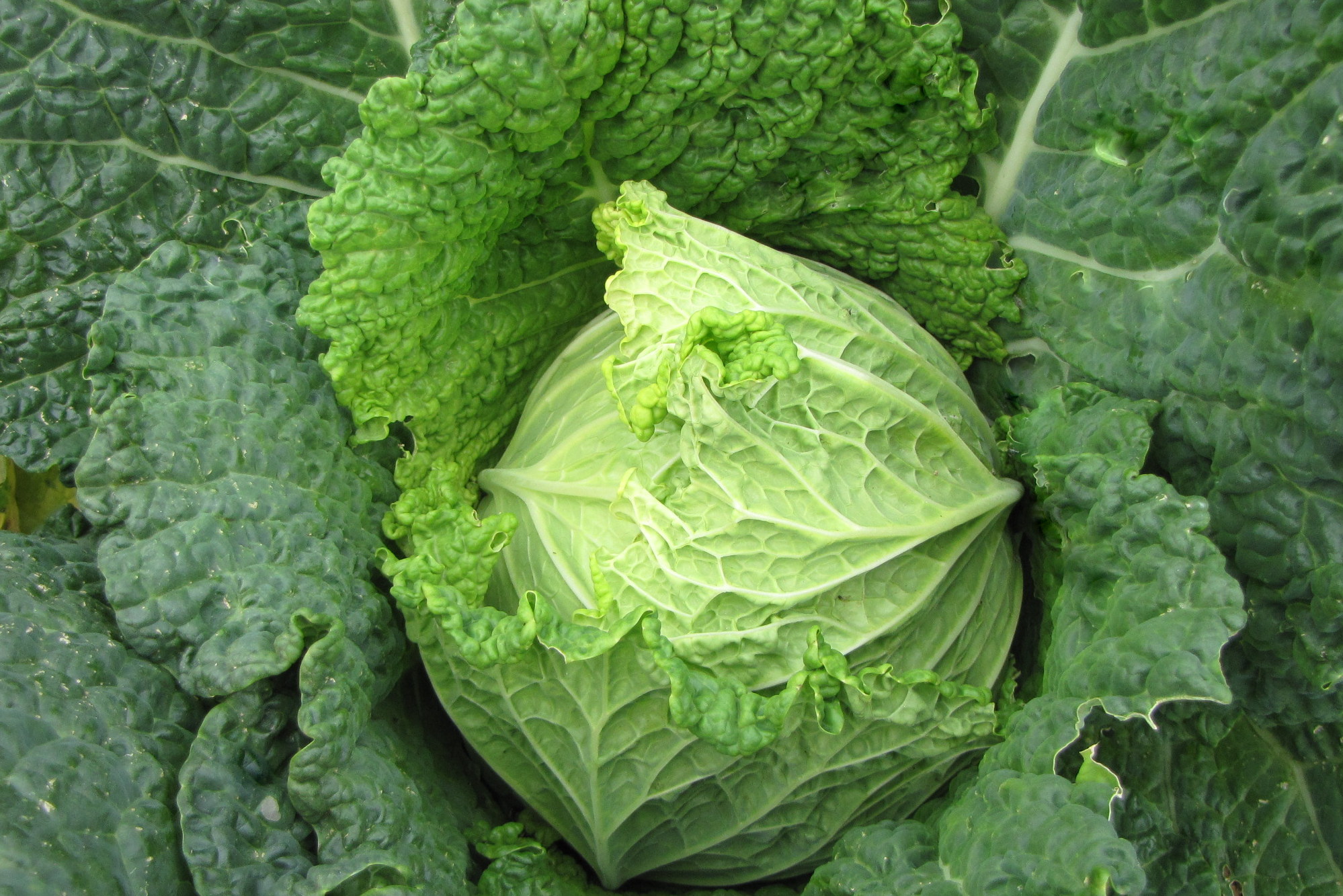
Cabbage is best started indoors, in deep containers, about five weeks before the last freezing date is expected in your area. Plant the seeds about 1/8″ deep in good seed starting medium. Then cover the container with a plastic bag to retain humidity and place in a warm location. When the seedlings emerge, provide abundant light and grow on. Plant in your garden on a cloudy day so the plants stand about 18″ to 20″ apart. Cabbage is a biennial, requiring two years to produce seed. In some milder climates, you can simply mound mulch around your cabbage plants, leaving them rooted in the garden. But in severe winter areas, you must dig the plants and re-plant them into large containers; I use 5 gallon buckets with holes drilled in the bottom for drainage. These plants are then moved indoors into a very cool location and kept over winter, watering just enough to keep the plants from drying out. In the spring, replant the cabbages. The heads will split, sending out a tall seed stalk. When the seeds are dry, carefully harvest into a bag or bowl. When the seeds are completely dry, store in an airtight container. Cabbage will cross with others of the cabbage family, including collards and Brussels sprouts so either grow only one of this family or isolate them very far apart.
CABBAGE about 30 seeds per pack

Late Flat Dutch
Late Flat Dutch This is a late maturing cabbage, perfect for winter storage, canning or making sauerkraut. Ours have been weighing about 10-15 pounds of sweet, tender, tightly wrapped heads. 100 days.

Danish Ballhead
Danish Ballhead You’ll love this sweet, solid-packed 5-7 pound cabbage. It’s great for any uses and stores very well. One of our dependable favorites! 95 days.

Savoy Perfection
Savoy Perfection This is the cabbage that always draws attention in our garden. Its pretty crinkled leaves are so gorgeous. And the taste is just as luscious, being sweet and crisp. It stores quite well too. 100 days


